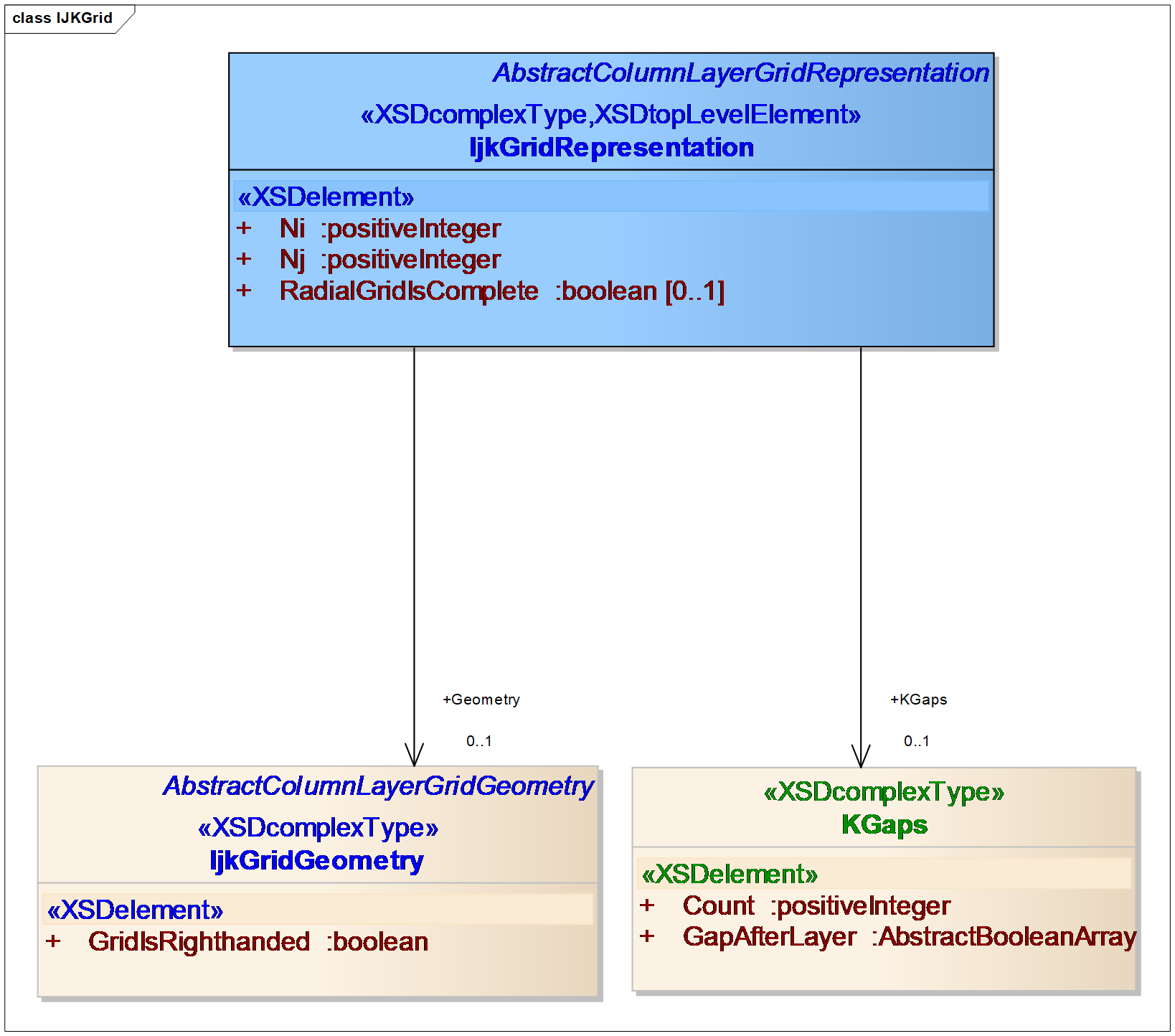11.12.2 IJK Grid Representation
| Topic Version | 1 | Published | 09/11/2015 | |
| For Standard | RESQML v2.0.1 | |||
An IJK grid representation is the most common example of a grid with column-layer cell geometry. To match industry usage, this grid type supports several extensions not present within the unstructured column-layer grid or the unstructured grid, specifically, IJ gaps, K gaps, and radial cell interpolation (Figure 11.12.2-1).

The IJK Grid has seven primary indices, all of which may be obtained from the IJK grid objects shown in Figure 11.12.2-1 :
- NI, NJ, NK, as previously described
- #Intervals = NK + GapCount
- GapCount is the number of K gaps in the model. In RESQML, unless stated otherwise, the bottom of one layer is contiguous with the top of the layer below it. As a consequence, the number of nodes along a coordinate line needed to describe the cell geometry is NK+1, not 2*NK, which would be required if no assumptions were made about continuity.
If gaps are introduced between layers, then GapCount>0, #Intervals>NK, and the number of nodes also increase. Eclipse GRDECL/GRID and VIP/Nexus CORP data formats, for example, make no assumptions about the continuity of cell geometry. Each would have GapCount = NK–1, #Intervals = 2*NK. This indexing may be preserved within RESQML, if desired, using the gap count.
- NIL, NJL and NKL are used to define the number of the edges (or “lines”) of the cells.
- NIL = NI + 1 (always)
- NJL = NJ + 1, except for “complete” (periodic) radial 360o grids, in which case the first and last cell faces are identical and NJL = NJ
- NKL = NK + GapCount + 1
The first three of the seven indices appear explicitly within the schema, as shown in Figure 11.12.2-1 . The others are inferred from the optional IJK grid objects, as just described.
IJK grids support a radial interpolation option. For radial grids, the r=0 origin point must be specified independently for each interval edge of the model. This geometry is attached through the additional grid geometry attachment kind of “radial origin polyline”. The number of nodes on this polyline must match the coordinate line nodes and hence has a count of NKL. The use of an explicit center point allows arbitrary inclinations for the radial grid, for example, to represent horizontal radial (or elliptical) grids aligned with horizontal wells.
The IJ gaps object is used to describe gaps between columns of the model. i.e., to describe fractures with finite volumes instead of simply fault surfaces. Grids of this type may be described using Eclipse GRID and VIP/Nexus CORP data formats, but not Eclipse GRDECL. This option does not modify the indexing of the cells or columns, but it does increase the number of pillars and coordinate lines.
IJK grid geometry inherits from column-layer geometry, and provides the topological support for the coordinate line nodes of the grid. In addition, it carries several elements that describe the grid geometry:
- Of these, the grid parity (±) is mandatory. Its value is needed for the calculation of
cell volumes and cell face transmissibility. The parity is defined as the sign of the triple
cross product obtained from the three cell tangent vectors.

Cell volume =

Face Transmissibility =

These are the geometric components to cell volume and face transmissibility, and do not include the additional physical properties, e.g., porosity, permeability or viscosity. The parity calculated from this triple product is uniform on a well-formed grid, although local defects may occur. Typically, negative cell volumes or negative transmissibilities are set to zero within reservoir modeling applications.
- The other elements provide information on whether geometry is degenerate (node colocation) and are optional.